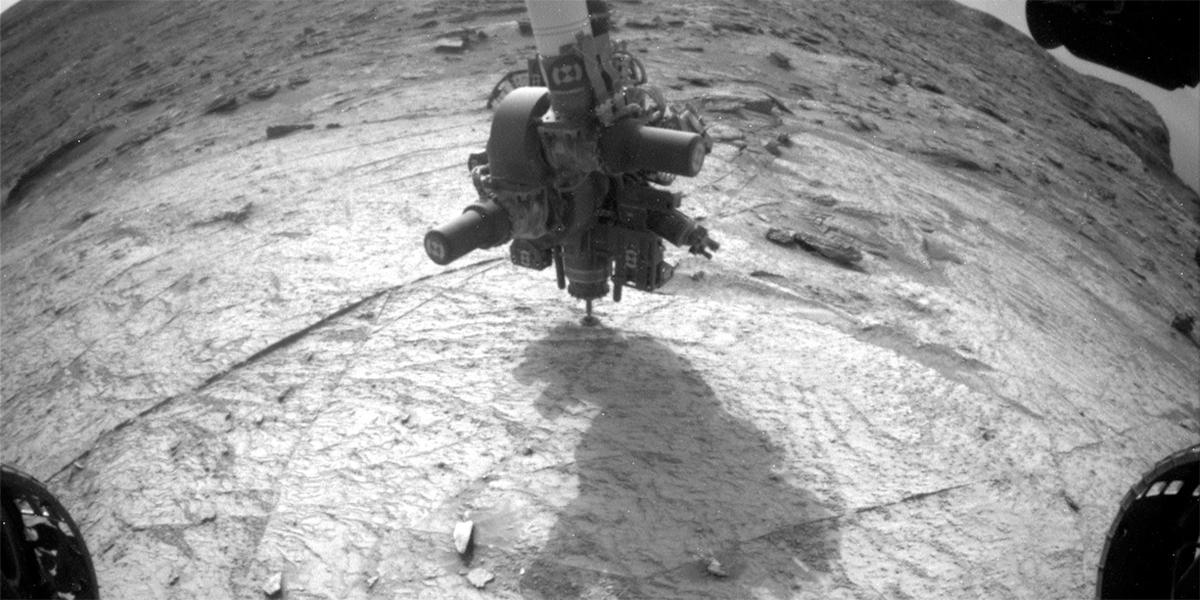3 min read

The MSL team is very happy today, because our first drill attempt since last November was successful! This Front Hazcam image shows the drill being extracted from the new drill hole, which is surrounded by drill tailings as expected. This is one of several times in MSL’s mission that drilling had to be re-designed to overcome an anomaly, again requiring lots of careful planning and testing using nearly identical drill hardware at JPL. Kudos to the anomaly resolution team and thanks for all the good work that enabled the capability to drill again! Drilling is required to acquire samples of rock and deliver them to the laboratory instruments SAM and CheMin inside the rover, so this is a day of celebration for the MSL science team.
But before any sample can be delivered to CheMin or SAM, we have to see the results of the drill sample portion characterization that was planned last Wednesday. These results will not be relayed to Earth in time for planning Sols 3514 through 3516, so this weekend's plan includes many remote sensing and environmental observations, including more Mastcam and Navcam images of the terrain east and west of the rover at various times of day to improve the sampling of observational geometries needed to constrain the photometric behavior of the surface materials. Such photometric observations are useful in determining the scattering properties and roughness of the rocks, soil and dust on the surface. ChemCam will also be busy, with LIBS rasters planned on each sol, of targets "Magna Brava" (local bedrock), "Rio Uraricoera" (a vein), and "Wiapri" (a dark rock). Mastcam will document the LIBS spots on each of these targets, and on the morning of Sol 3514 will acquire a 12x2 stereo mosaic extending the coverage of sedimentary structures at Marbura Hill and a multispectral observation of disturbed soil at "Kamana." That afternoon, Navcam and Mastcam will examine the properties of dust in the atmosphere and Mastcam will acquire two more stereo mosaics, of "Amacuro" and "Deepdale."
On Sol 3515, Mastcam and Navcam will measure the amount of dust in the atmosphere and Navcam will search for dust devils and clouds more extensively than usual, as additional time and power are available this weekend. Navcam will search for clouds before dawn and Mastcam will measure the amount of dust above the rover later the next morning. Navcam will search again for clouds and dust devils later that sol. The rover will wake up before dawn again on Sol 3517 to allow Navcam to search for clouds. Later than morning, Mastcam and Navcam will measure atmospheric dust content before Navcam searches for clouds one more time. REMS and DAN will also monitor the environmental conditions through the weekend plan. So MSL will be busy while we wait for news of the sample portion characterization!
Written by Ken Herkenhoff, Planetary Geologist at USGS Astrogeology Science Center







